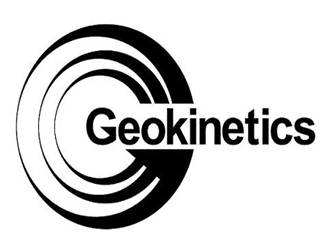Tuesday, April 7
Cefalo's Banquet and Event Center
428 Washington Ave., Carnegie, PA
DIRECTIONS
*Note that the Carnegie Exit (65) on/off ramps of the Parkway West (376) are closed until December 2015. Seek an alternate route (two posted detours are the Green Tree Exit on I376 or the Carnegie Exit on I79)
5:00 - Social Hour sponsored by

6:00 - Dinner Buffet
7:00 - Lecture
Earthquake Fingerprint Scanning to Help Discern Induced Seismicity
Mike Brudzinski, PhD
Miami University of Ohio
Questions regarding the link between human activities and seismicity have grown along with the rise in small earthquakes and hydraulic fracturing/wastewater injection activities in the United States. I will demonstrate the use of multi-station waveform template matching as a means to identify repetitive earthquake sequences. We propose that swarm behavior and corresponding low b-values from the frequency-magnitude distribution can be used as criteria to help discern induced earthquakes from naturally occurring seismicity. Identifying induced earthquakes using this approach can be done in near real-time without the requirement of local seismic networks or industry data (e.g., injection volumes/pressures or stimulation reports), although this additional data should be later utilized to further build support for the designation of either an induced or natural origin. In addition, the cross correlation products of template matching are ideally suited to perform advanced location and magnitude estimation to better characterize identified sequences. In Ohio, 5 recent earthquake swarms have been correlated temporally and spatially with either hydraulic fracturing or wastewater injection, while over a dozen non-repetitive earthquakes appear to be naturally occurring. Application of this approach to Oklahoma reveals over 42,000 earthquakes since 2008 and the majority occur as swarms with low b-values, indicating the dramatic increase in seismicity has been induced.
Biography
 Professor Brudzinski earned a Ph.D. in Geophysics at the University of Illinois at Urbana-Champaign and completed an endowed postdoctoral fellowship at the University of Wisconsin-Madison before joining Miami University in 2004. His scientific research is focused on the origins of hazardous earthquakes. He has maintained nearly a decade-long field experiment in southern Mexico to investigate how colliding tectonic plates generate devastating earthquakes and tsunamis. He is also helping to uncover relationships between enhanced oil and gas recovery and earthquakes in the central and eastern US, focusing on recent seismicity in Ohio. His work has been featured in the New York Times, National Geographic, Time, and National Review, with an appearance on the Glenn Beck TV Show.
Professor Brudzinski earned a Ph.D. in Geophysics at the University of Illinois at Urbana-Champaign and completed an endowed postdoctoral fellowship at the University of Wisconsin-Madison before joining Miami University in 2004. His scientific research is focused on the origins of hazardous earthquakes. He has maintained nearly a decade-long field experiment in southern Mexico to investigate how colliding tectonic plates generate devastating earthquakes and tsunamis. He is also helping to uncover relationships between enhanced oil and gas recovery and earthquakes in the central and eastern US, focusing on recent seismicity in Ohio. His work has been featured in the New York Times, National Geographic, Time, and National Review, with an appearance on the Glenn Beck TV Show.
Brudzinski's educational focus is on developing active e-learning courses through assessment of inquiry-based learning, student engagement, and authentic scientific experiences in computer-enabled classrooms. He has generated over $1.3 million in external funding at Miami to support the integration of research and teaching efforts, including a National Science Foundation Early CAREER Award. He has mentored over 20 students and postdocs resulting in national presentations, publications, and over $400K of student/postdoc led funding and awards.
To join GSP, return to the home page and click the Join GSP tab.

